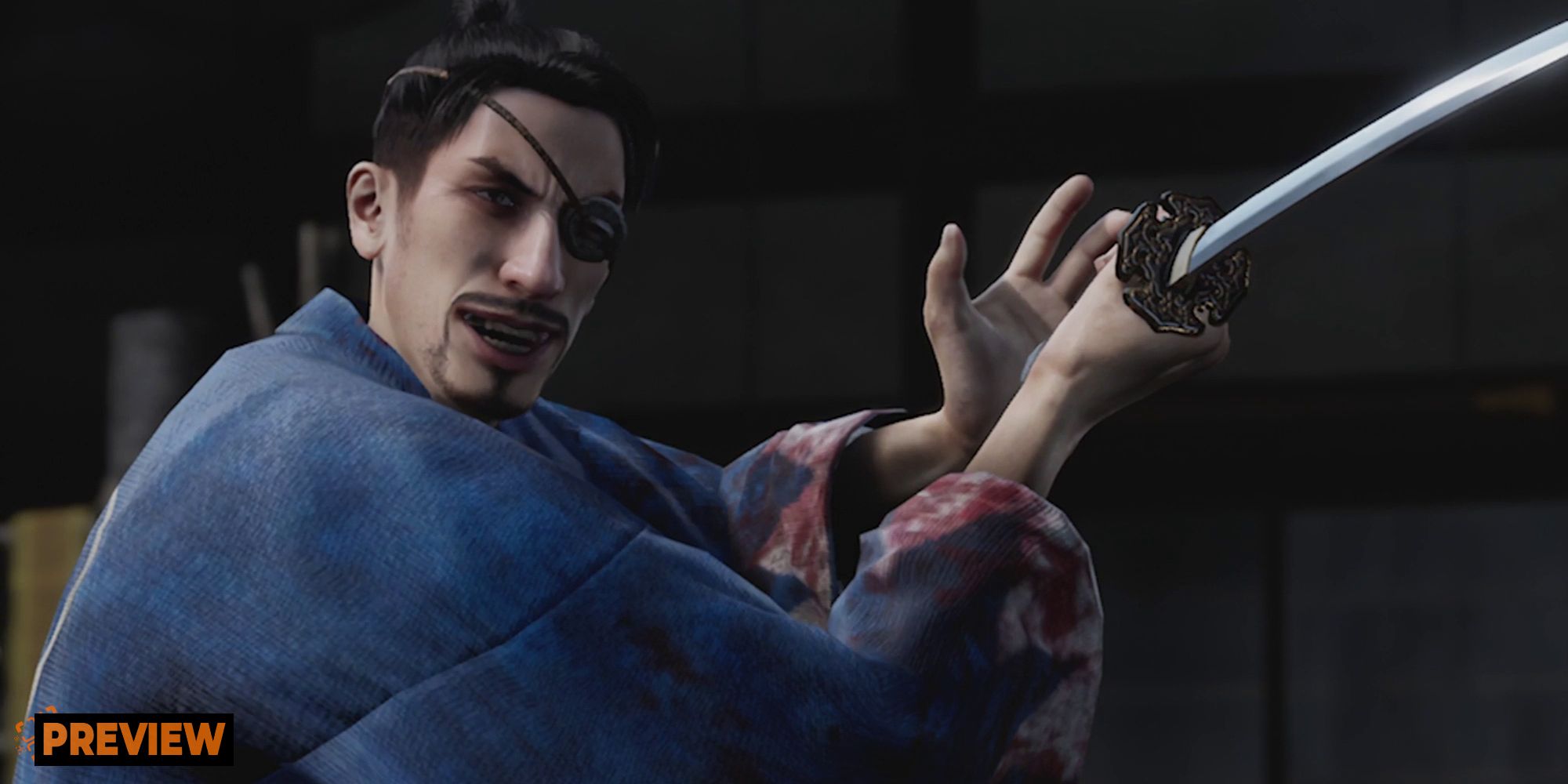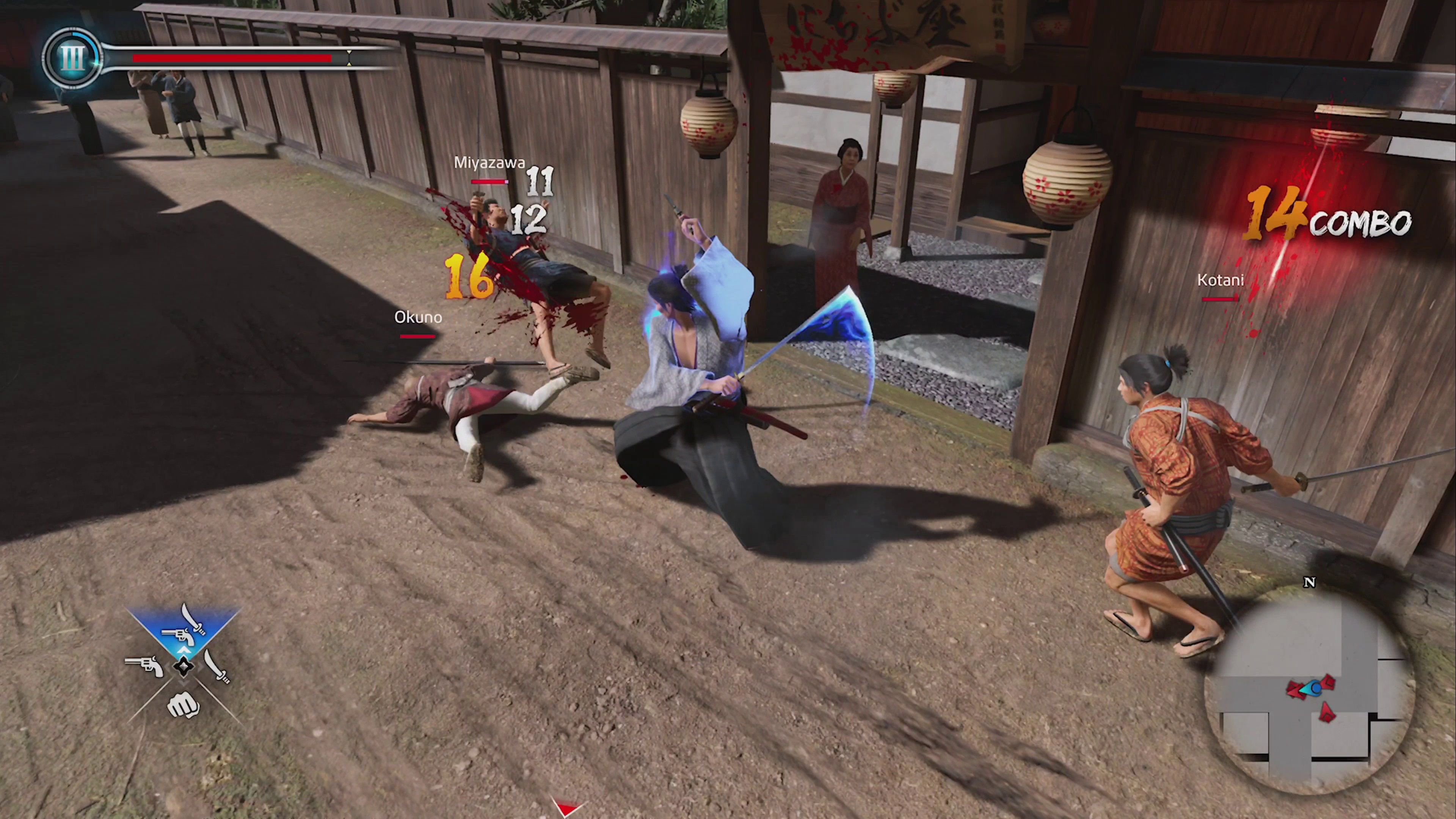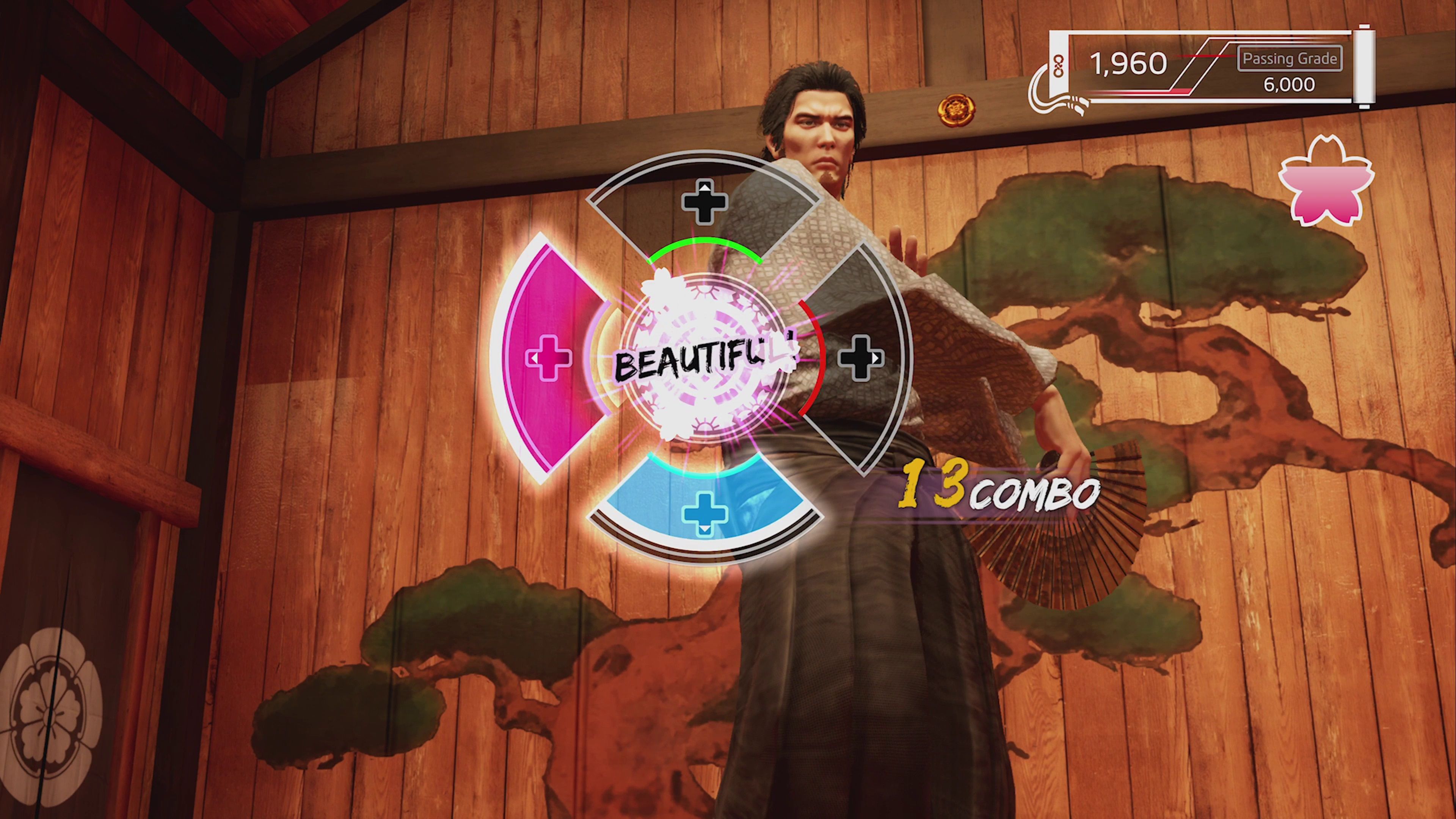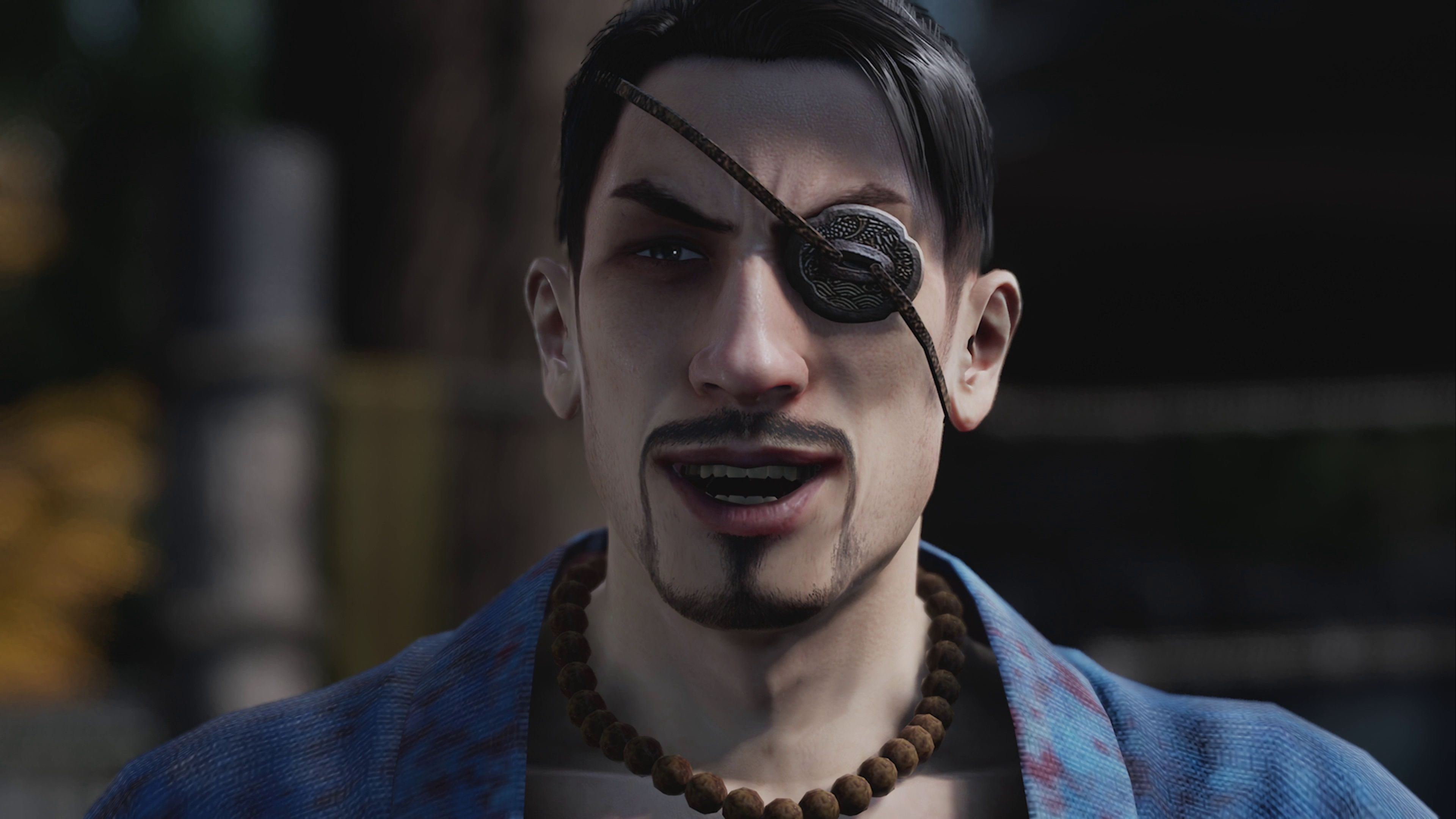There’s something deliciously captivating about slicing through your opponents and seeing the blood burst out in a crimson crescendo in Like a Dragon: Ishin. The mainline Yakuza games have their fair share of violence — even smacking people in the face with bikes is commonplace, and plenty of blood is spilled in the name of betrayal, revenge, and love. Yet Ishin feels noticeably bloodier, as you take on the role of the famous samurai Sakamoto Ryoma and trade the series' traditional bikes, baseball bats, and trash cans for a sword that's as sharp as Akiyama’s wit.
Yakuza’s combat has been hotly debated in the past, with many fans preferring the turn-based battles of Yakuza: Like a Dragon over the classic brawler style of older titles. Ishin’s combat is familiar territory, utilising four different styles that you can switch between in action-style battles, but having such powerful weapons at your disposal makes it surprisingly reinvigorating.
Swordsman utilises your katana for powerful attacks, Gunman allows you to attack from long-range, while Brawler is reminiscent of past Yakuza titles and has you using your bare fists to batter your enemies. Best though, is the Wild Dancer style, which has you dual-wielding your katana and gun in a flurry of bullets and blade, while also allowing you to evade attacks with the finesse of a dancer. Though I didn’t get to dabble with them during my hands on of Chapter 3, Ishin will also feature Trooper Cards in battle, which I discussed in my last preview.
Exploring Fushimi and Gion reminded me that RGG Studio is the master of creating densely packed areas brimming with life. Though the actual map size might not be the largest compared to other games, the wealth of detail and optional content makes the world feel much larger than it truly is. As NPCs go about their business, with couriers running past you, thugs jumping you in alleyways (rookie mistake, lads), and you create bonds with shopkeeps and other characters, you get that sense of ‘living’ within the game.
You’ll encounter different characters and sub stories as you explore the city. Some trigger as soon as you walk down a certain side street, some rely on you following up a nearby commotion to sate your curiosity. The sub stories maintain the series’ usual diverse range of tales, with some chronicling emotional and touching story threads, while others are downright bonkers. Either way, most are unforgettable. The Chapter 3 storyline cutscenes and objectives could be wrapped up fairly quickly, but I found myself lost in the optional content and whiling away my time in a range of side activities.
As you might expect, Inshin’s side activities include minigames. I tried my hand at the karaoke — and naturally, I chose the fan favourite Baka Mitai — and while I was on a rhythm game high, I also dabbled in the Buyo Dancing minigame that sees Sakamoto dancing with a fan. I’m not particularly good at rhythm games, so I found chicken racing to be one of my favourites. With a chicken named ‘Flustercluck’, you can’t help but laugh at the humour RGG weaves throughout the game. Heading to the brothel might not be exactly what you expect either, as you’ll find yourself in a drinking minigame followed by a rock, paper, scissors challenge with the loser stripping off their clothes.
For me, the main attraction was seeing my best boy Majima on screen once more. Sorry, make that Okita Soji, as that’s the role he’s fulfilling here. As the studio’s first game to take advantage of Unreal Engine 4, Okita is looking damn fine, too. As much as I love Kasuga Ichiban and the new Like a Dragon crew, it’s nice to see the old characters return. Especially considering many of their stories have already run their course and they will not reappear in the main series.
Despite taking on historical roles, the character personalities that we know and love still shine through. RGG knows its audience well, and it didn’t take long for Sakamoto (Kiryu) to say, “Nani?!”, while Okita was referred to as the ‘Mad Dog’ within minutes of his introduction. You also get the same playful banter between Sakamoto and Okita — both swordplay and wordplay. I won’t forgive Sakamoto for saying that Okita doesn’t live up to the rumours of him being ‘handsome’, but Okita’s comeback of “Maybe you just have shit taste” did make me snort a little.
One of the most interesting aspects of Ishin is the culture it shares with players. While the main series gives us a taste of modern Japan, it was interesting to peek into the past and learn about this incredible period and culture that I know nothing about. I found the Bakumatsu Archives (the in-menu glossary of events, terms, and characters) particularly helpful, as it’s easy to get overwhelmed with remembering who everyone is and what role they play, especially when they’re all ingrained in your mind as their Yakuza counterparts. Ishin is set to be an interesting journey for Western fans, and fortunately, we don’t have to wait much longer before we can experience everything it has to offer.
Like a Dragon: Ishin launches on February 23 for PlayStation 4, PlayStation 5, Xbox One, Xbox Series X|S, and PC




